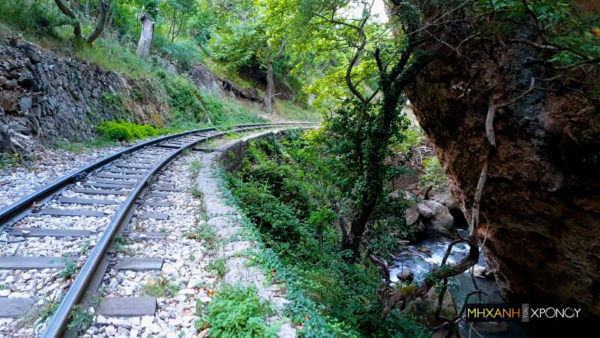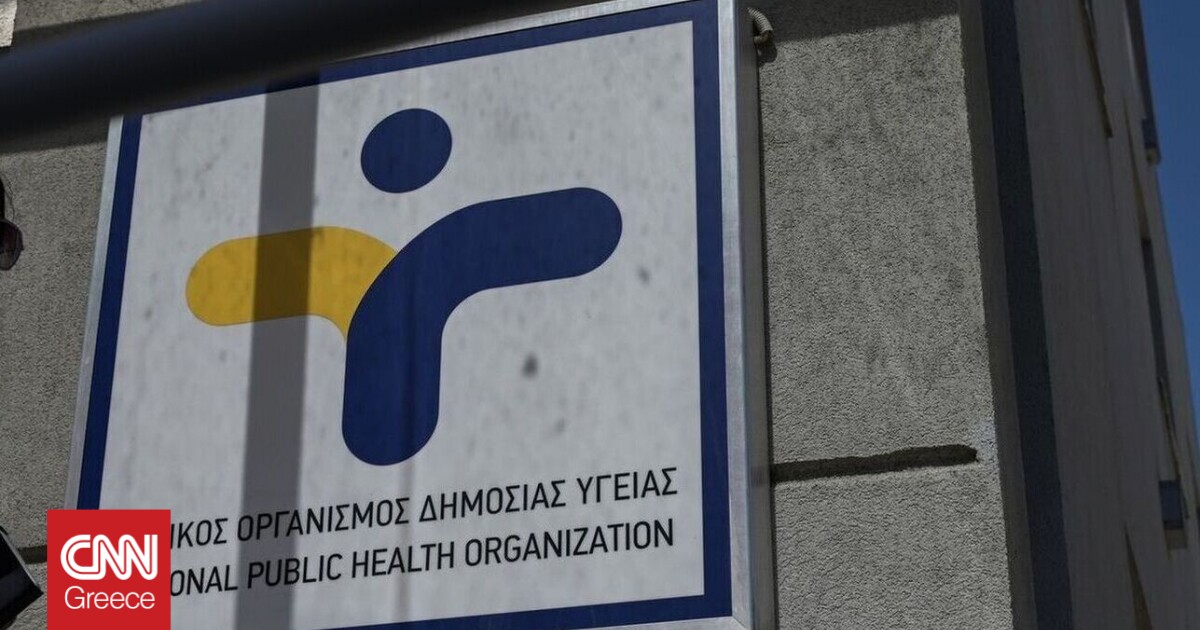Toothed. The most beautiful train ride in Greece (drone)
Hidden in the green gorge of Vouraikos and at a distance of 10 kilometers from Kalavryta, is one of the most beautiful villages of Achaia. Zachlorou.
Its name came from the Slavic word “Zagloro”, which means “behind the mountains”, and it was built during the Turkish occupation by the persecuted Epirotians.
Zachlorou Achaia from above – Image source: Marinos Charalambopoulos (Travel Inspiration)
It is located at an altitude of 623 meters and its few permanent residents are mainly engaged in animal husbandry and agriculture.
Among the plane trees and next to the Vouraikos river there are guesthouses and taverns, where the visitor can enjoy the local dishes and the special hospitality of the residents.

The Vouraikos river, to which the gorge of the prefecture of Achaia owes its name – Image source: Marinos Charalambopoulos (Travel Inspiration)
The most beautiful train route in Greece
To get to Zachlorou, you have to take the train. And not a train, but the legendary Cogwheel Railway, i.e. the 22-kilometer narrow-gauge railway line that connects Diakofto with Kalavrita.
For anyone who has made the route, it is considered an exciting and unforgettable experience. The route, through rocks and cliffs, is considered the most beautiful in Greece and one of the most impressive in Europe, as passengers testify.
The lush vegetation, the running waters and the precipitous rocks created a scene of cinematic and incomparable beauty.

The moment when Odontotos bursts into the dark imposing rocks of the Vouraikos Gorge is undoubtedly magical – Image Source: Marinos Charalambopoulos (Travel Inspiration)
When the visitor arrives at the station of Zachloros, he sees a sign with the name “Mega Spilaio”. And this, because above the village, at a distance of about 45 minutes, is the Monastery of the Great Cave.
Considered the oldest monastery in Greece, it played an important role in the national liberation struggle and attracts thousands of visitors every year.

The railway station of Zachloros – Image source: Marinos Charalambopoulos (Travel Inspiration)
See the Toothed Railway and Zachlorou Achaias through the amazing aerial shots of our partner, Marinos Charalambopoulos (Travel inspiration):
The history of the Cogwheel Railway
The Toothed Railway created the inspiration of Harilaos Trikoupis. His vision was for the train to reach Tripoli, but delays in the construction of the Diakofto-Kalavryta line and cost overruns were the reasons why the line was not extended that far.
The study was assigned to French scientists. Italian craftsmen, who had experience of similar projects in the Alps, also contributed. The construction cost exceeded 1,000,000 drachmas.
March began in 1889 and was inaugurated in 1896, during the government of Theodoros Deligiannis. From then on, Odontotos and Vouraikos “walk” together.
The implementation of the project contributed decisively to the tourist development and movement of Kalavryta and the neighboring villages, but it was not done at the expense of the natural environment.
The construction was done with absolute respect for the special ecosystem of the canyon. The train is so well integrated into the natural environment, it looks as if it has always been there.

The Cogwheel Railway in a photograph from 1896 – Image source: Wikipedia
The first engine was steam-powered and water towers were built at each stop of the train, from which the engines’ boilers were filled with water. During the years of the Occupation, the Germans derailed the old machine and destroyed the lines.
After the war, the railway was restored to its original form and new diesel-engined carriages were introduced. Today, the first steam engine that was used adorns the station of Diakoptos.

The first steam engine of the Cogwheel Railway at Diakoftos station – Image Sources: Put it again and Celaleddin İçyer (Google Maps)
The special manufacturing technique
Odontotos was one of the most difficult projects for its time, due to the particularly difficult terrain and the high altitude at which it ended. To overcome these difficulties, the railway was built using the toothing technique.
Based on this, the train is hooked, using suitable gears, to toothed rails at the points where the slope of the ground exceeds 10%. This is where the name of the railway comes from.

The designation “toothed” comes from the “teeth” that large trains of this type have that help them climb grades – Image source: Wikipedia
The Toothed line is 75cm wide. It is very narrow, but not the narrowest in Greece, as this “title” also belongs to legendary roller coaster of Pelion, also known as “Moutzouri”.
Main photo source: Marinos Charalambopoulos (Travel Inspiration)



/cloudfront-eu-central-1.images.arcpublishing.com/madsack/NUWZCWCJRJBIJHU5AUO5EXOHDY.jpg)

/cloudfront-eu-central-1.images.arcpublishing.com/madsack/NHW556UKZ5AVBM47OAWSYLJCPQ.jpg)